Travel isn’t complete without visiting the local museum.
It was a good breezy morning of Tuesday, and even if I still not used to this frequently unstable weather, I suggested that we should have a walk and visit the local attraction here in Chinatown.
You might be thinking why we chose to spend our weekend here notwithstanding all the COVID-19 scare.
Well, guess what…
I am Asian (Filipino descent) and my partner is a Caucasian Australian. We don’t easily get fished by many fake news and gossips online, and we are not irrational people. We are just young travelers who want to explore the city, and the new virus wouldn’t stop us to enjoy what we love.
After all, visiting Chinatown makes me feel like this is part of my home. The Philippines is one of the diverse countries in Asia with a huge Chinese community that started in the early 10th century, and I can’t imagine my community without them.
It would be very interesting to learn how the Chinese community in Australian began and how they successfully cope with all the struggles and excel in their craft.
History of the Museum
The Museum of Chinese Australian History was established in 1985 as a community-run, not-for-profit national institution to document, preserve, collect and research the history and culture of Chinese Australians and their descendants.
The Museum is housed in a late nineteenth-century five-level warehouse. The warehouse was built in 1890 by the Cohen Bros who were furniture manufacturers and they used this building as a factory to make furniture and also a storeroom.
After the Cohen Bros moved out, it was purchased by Her Majesty’s Theatre and was used for the storage of sets and costumes. During the hey-day of musical extravaganzas, it was also used as change rooms for the large choruses that were a part of these shows.
The building was acquired by the Victorian government from Her Majesty’s in 1985 and is rented by the Museum for a nominal fee. When it opened its doors to the public in November 1985 it had no foundation collection and only three levels of the building had been renovated – basement, ground and first floors. The second floor was renovated in 1987 and the third floor along with the rest of the building in 1995. In 2010 renovations were made to the ground and first floors.
Admissions:
Adult: AUD$11.00 per adultConcession/Child AUD$9.00
Family AUD$26.00 (2 Adult + 3 Children)*Guided tours available, bookings essential
Exhibitions:
During our visit, the museum has several ongoing exhibitions that tell remarkable stories. We started on the top floor exhibition floor going down for a better experience.
Level 3 - One Million Stories Exhibition
Level 3 showcases its newest exhibition, One Million Stories Exhibition – celebrating its 200th anniversary (last 2018) since the first Chinese person migrated to Australia. This exhibition showcases the many interesting journeys of individuals, families and community groups that have settled, integrated and help form the Australia Society as we see it today.
Some of the original cheongsam made of silk.
One Million Stories Exhibition aims to:
*Heighten the understanding of the diverse background and characteristics of Chinese Australians past and present.
*explore the evolution of a changing cultural identity.
*perpetuate a lineage of heritage and culture for contemporary Chinese Australians.
*create an inclusive national story from all parts of Australia by widely seeking contributions from people, organizations, and regions to recognize the diverse histories and communities across Australia.
Photo of young Willian Ah Ket, the first Chinese Magistrate in Australia
Freestanding Mason & Hamlin Harmonium Organ circa 1869
The Chinese community is known to be one of the hardworking people. During the early days, many Chinese settlers traveled from China to Australia to work as laborers. Through perseverance and hard work, the community becomes stronger and settled in Australia (first recorded in Sydney) and becomes an integral part of society.
Level 2 – The Han Dynasty Exhibition
If you love Chinese action-packed period movies such as Warlords and other movies with terracotta warriors, then this floor will bring your spirit back to that era of extravagance wealth.
A burial suit made of jade.
This is a replica seismograph of Zhang Heng, as it is described from the survived writings. It is an urn-shaped and had eight dragon heads, each with a ball in its mouth. Below each dragon, there was a frog with its mouth open, waiting to catch the ball when it fell.
The Han Dynasty was the longest dynasty in the last 2000 years and was known more Central Asian due to the silk road trade. The merchants travel with their large caravans and camels which they export silk, and import horses, glassware, and precious metals.
In this exhibition, you can learn about The Han’s culture, way of life, the philosophy that was pioneered by Confucius, its rich literature achievements, and how the rulers govern the society and the people.
Level 1 – Classic Chinese Painting Reproduction Display
Chinese paintings are famous all over the world, and the original early painting scrolls can only be found in the major museum such us one in Beijing (including from very private collectors). In this Level 1, they displayed a variety of Chinese painting reproduction from different known early artists. If you want to grab one of this reproduction, you can order it from the Chinese Museum. It would be a nice accent in your lounge room!
Lower Ground Level – Finding Gold Exhibition
This is my favorite part of all the levels. Why?
Because this is the most interactive experience inside the Chinese Museum!
This level showcases the beginnings of early Chinese settlers, starting from their adventure from Hong Kong harbor boarding to their boat as gold seekers, and traveling to Australia during the 19th century. You will experience what it feels like traveling with an old vessel, swaying in the open ocean.
Don’t ignore the storytelling part because that’s the beginning of your amazing experience!
A deep winding mine carved from the soil below the museum takes visitors from one real-life scene to another – from a sailing ship on the high seas to Cantonese food in Ah Chang’s cookshop (picture above).
You can seek your fortune in the temple of Guan Gong, where I got my lucky fortune! Prepare to have a gold coin with you as a donation.
You can play dress-up like the Cantonese opera in a goldfield’s tent theater and snap some good photos. These life-size mannequins gave me quite a fright though, lol.
This part of the goldfield where you can hear diggers doubling their winnings in a Chinese lottery!
Dragon Gallery
This dragon gallery houses three significant dragons – the Young Chinese League dragon, Dai Loong (the Big Dragon) and the Millennium Dragon.
The Dai Loong or Big Dragon (picture above) has a significance in the history of dragon-making in China. Processional dragons are handmade out of silk, bamboo, and wire. It is a folk craft practiced in the city of Foshan, in Guangdong province in southern China. However, when members of Melbourne’s Chinese community went to Foshan in the late 1970s seeking a new dragon to parade in Melbourne’s streets, they found that due to the suppression of traditional culture, the production of processional dragons has ceased after 1949.
In 1978, samples from Melbourne’s parade dragons were given to a descendant of a traditional dragon maker in Foshan. Soon after, Dai Loong was created, prompting a revival of Foshan’s dragon making industry after a period of almost 30years.
Unlike western representations of the dragons, Chinese dragons are good-natured and are believed to bring happiness, immortality, fertility and ward off evil spirits. Through the dynasties, the five-clawed dragon has also represented the Emperor and some Chinese refer to themselves as Loong De Chuan Ren (meaning Descendants of the Dragon).
Every Chinese New Year, the beginning of the Spring Festival is marked with the appearance of the dragon, who rises from his slumber into the sky where his breath produces rain clouds. As the controller of the heavens and the bringer of the spring rains, the dragon has played an important role in China’s once traditional agricultural society.
Souvenir Shop
After you’ve experienced and visited the whole floors, its time to check the shop adjacent to the Dragon Gallery for some souvenir items. I bought a Shanghai-inspired fan-designed brooch, ornated with pearls because it would be a great accessory for my dresses. They also sell Chinese history books, stationeries, cards, Chinese animal sign accessories, etc.
Why you should visit the Chinese Museum?
As a newbie here in Melbourne, I believe that visiting this museum will help me understand more the people and the society so that I can have a better awareness of what the future will be. Don’t be afraid to visit this place just because you read online something negative (mostly false news) about their community and others. Australia today wouldn’t be a great one, without the Chinese Australian community, and the rests.
Chinese Museum Melbourne
Address: 22 Cohen Place, Chinatown, Melbourne VIC
Email: info@chinesemuseum.com.au
Website: www.chinesemuseum.com.au
Address: 22 Cohen Place, Chinatown, Melbourne VIC
Email: info@chinesemuseum.com.au
Website: www.chinesemuseum.com.au
Opening Hours: Daily 10am - 4pm
Closed Public Holidays: New Year's Day, Australia Day, Labour Day, Easter (Fri 20 April- Mon 2 April), ANZAC Day, Queen's Birthday, Friday before the AFL Grand Final, Melbourne Cup, Christmas Day, Boxing Day.
Watch my youtube vlog here!























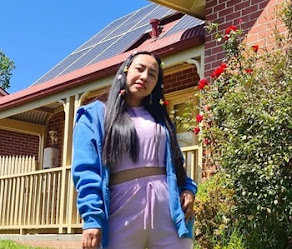
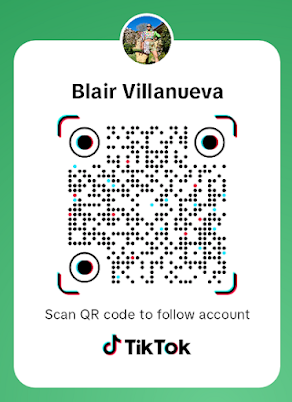















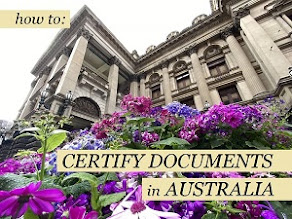
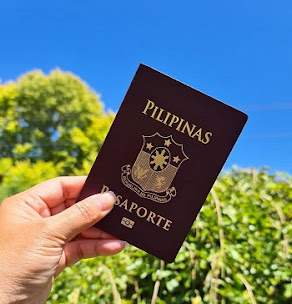
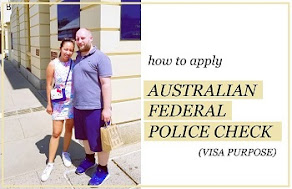


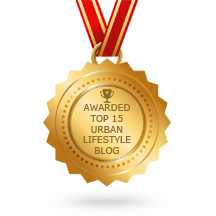

I LOVE how unique this post is, what a great experience. I LOVE interactive experiences, so I really dove into the part about actually walking through the story of an experiencing the "finding gold" exhibit. Experiential exhibits have a way of sticking with me much longer than a typical museum exhibit (just reading off of a sign." I would have loved to have my fortune read at the museum! And I totally feel you on the mannequins, haha! What a unique experience, so glad I got to read about this!
ReplyDeleteIt is all worth it. I'm glad I pay them a visit before everything's closed.
DeleteI must admit I was curious to know why the Chinese Museum was a must see spot in Melbourne. So interesting to read that it has been around for 200 years. I am sure that the “One Million Stories” exhibit provides so many interesting tales. We certainly learned a lot about the Silk Road when we travelled to China. So always interested to learn more. Love when a museum has interactive displays to get people engaged. I might want to try the dress up area. But dragons fascinate me so that is where I would head first. Thanks for sharing this spot.
ReplyDeleteI didn't try the dressed-up coz I'm too chicken with those mannequins!
DeleteWow this museum looks cool. Next time I am in Melbourne I am definitely visiting this place.
ReplyDeleteThanks for visiting Raksha!
DeleteIt sure seems like a nice place to visit plus it has many side attractions. The thing is corona won't let people. Can't wait till it's over.
ReplyDeleteAll museums are closed. Good thing we visited before Victoria State Govt ordered many businesses to pause for the meantime.
DeleteI haven't been to Melbourne yet. And I have not heard of this museum before, so thank you for the recommendations. I try to visit local museums on travel to get to know the culture and history of a region. In the museum you described, I like the gallery of dragons the most. They look so impressive. Reproductions of Chinese painting are also worth seeing, for sure.
ReplyDeleteAgnes
Hope you can visit Melbourne soon when we all are able to travel. Stay safe.
DeleteThat museum is way cooler than I would have ever imagined. So multi-dimensions between the mine you walk through and the colorful art displays! I also think it's important to honor Chinese culture, particularly as China is getting a particularly bad wrap right now. The world has China to thank for a lot of things--from ancient history to modern times!
ReplyDeleteChina is always misunderstood (and they have a culture of not needing to explain themselves), however they are one of the kindest people I've known. They only gaining bad reputations because of some corruption, however as a person knowing them will make you understood why.
DeleteIf the Temple of Leah in Cebu is not a Chinese Museum, this will be my first time to virtually see one. And indeed it's a great place to explore.
ReplyDeleteMaybe next time we will visit Temple of Leah :D
DeleteI usually do not visit museums, while I am traveling to new cities, mostly because I like getting lost on their streets and discover things that I had not thought off. But, you made me curios to visit the Chinese Museum in Melbourne! It sounds like a good place to learn about the Chinese population present in Melbourne and Australia. I would particularly enjoy the Dragon exhibition. I have always been fascinated by this element of the Chinese culture, so artful and colorful. Thanks for sharing!
ReplyDeleteI am an opposite of you. I believe that the only way to understand the place is to visit its future. We are fortunate that museum exists, that we can look back and visit the past. Then I could learn what we can do for the future.
DeleteI love cultural museums like this one. I have been to a few across Asia and loved figuring out the little nuances of the ethnic life like seeing those costumes including that of the burial ceremony. Found the dragon room quite interesting. Everything seems so vibrant and colorful.
ReplyDeleteI couldn't agree more. Asian's cultures are full of colors!
DeleteMuseum dates are the best! I've seen a similar exhibition in Korea. Like you, I prefer museums with interactive activities. I really want to try out those traditional clothes!
ReplyDeleteMy travel isn't complete without visiting local museums.
Delete